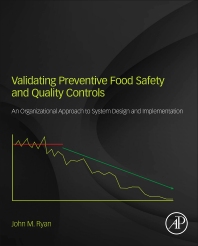Fewer secondary schools in the United States are selling less nutritious foods and beverages, such as candy and soda, according to a survey from theCenters for Disease Control and Prevention.
The greatest improvements were seen in states that have adopted strong school nutrition standards and policies for foods and beverages sold outside school meal programs.
The report,"Availability of Less Nutritious Snack Foods and Beverages in Secondary Schools - Selected States, 2002-2008,"was published today in CDC's Morbidity and Mortality Weekly Report.
The report shows that among the 34 states that collected data in 2006 and 2008, the median percentage of secondary schools that did not sell soda or fruit drinks that are not 100 percent juice increased from 38 percent to 63 percent. The median percentage of secondary schools in these states that did not sell candy or salty snacks not low in fat increased from 46 percent in 2006 to 64 percent in 2008.
"The school environment is a key setting for influencing children's food choices and eating habits," said Howell Wechsler, Ed.D, M.P.H., director of CDC's Division of Adolescent and School Health. "By ensuring that only healthy food options are available, schools can model healthy eating behaviors, help improve students' diets, and help young people establish lifelong healthy eating habits."
Mississippi and Tennessee made the greatest progress in improving the nutrition environment in their schools. In Mississippi, the percentage of secondary schools that did not sell soda or fruit drinks that are not 100 percent juice increased from 22 percent in 2006 to 75 percent in 2008; while in Tennessee the percentage increased from 27 percent to 74 percent. These two states are national leaders in implementing strong statewide school nutrition standards.
"Efforts to improve the school nutrition environment are working, and Mississippi and Tennessee are excellent examples of this progress. However, there are still far too many schools selling less nutritious foods and beverages," said Wechsler.
The School Health Profiles Survey is conducted among a representative sample of secondary schools in a state, large urban school district, or territory. The data are collected from self-administered questionnaires from the principal and the lead health education teacher at each sampled school. The 2008 report includes data from 47 states, 20 cities, and four territories.
The 2008 study results varied dramatically across states.
-- In Hawaii, Connecticut, California, and Maine, more than two-thirds of secondary schools did not sell baked goods, salty snacks not low in fat, candy, soda or fruit drinks that were not 100 percent juice.
-- In Utah, Kansas, Idaho, and Nebraska, less than one-third of secondary schools did not sell these items.
The School Health Profiles Survey is conducted every two years and monitors the current status of school health education requirements and content, physical education requirements, school health policies related to HIV/AIDS, tobacco-use prevention, nutrition, asthma management activities, and family and community involvement in school health programs. The 2008 data are available at www.cdc.gov/schoolhealthprofiles.
CDC: "Student meals improving"
Looking for a reprint of this article?
From high-res PDFs to custom plaques, order your copy today!







